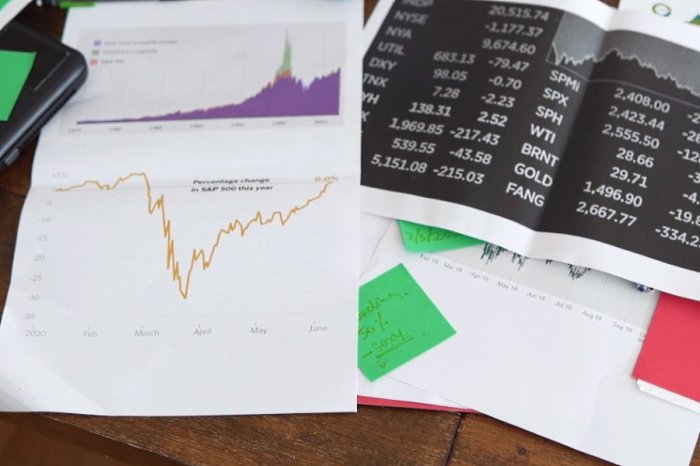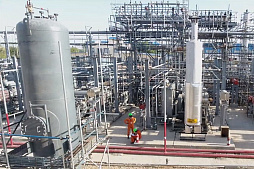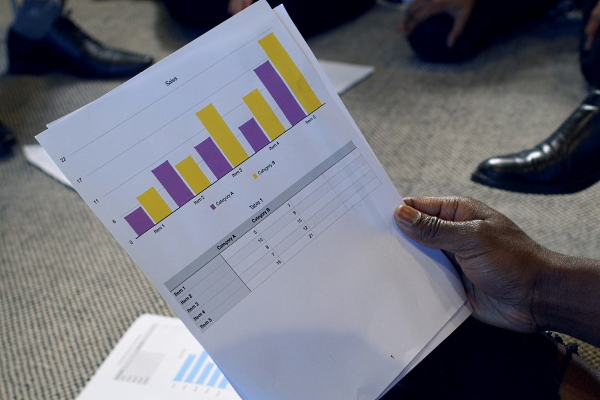To consider an application for financing, fill out the form and send it to us by e-mail along with the project brief, or contact our experts
Quite often, large American companies use it as the basis for financing long-term projects in various industries.
Financial institutions have strict requirements for companies planning to obtain this type of loan.
Businesses don't have to worry about lack of choice, however, as all major US banks, including Bank of America, JPMorgan Chase, Citigroup and Wells Fargo, offer attractive financing options for any investment project.
If you are interested in investment lending for business in the United States, contact the representative of the international financial company Link Bridge Financial LTDA.
We offer flexible long-term loans for up to 20 years to finance large projects in the energy sector, mining, oil and gas sector, infrastructure, environmental protection, agriculture, real estate and tourism.
Investment banks and financial institutions in the United States
Investment banks play an important role in the US financial system.These financial institutions originated during the Civil War of 1861-1865, when several banks first came together to jointly place federal government bonds.
The main functions of investment banks in the United States include the following:
• Issue of securities. These banks are negotiating with companies on the issue of securities and preparing these issues.
• Underwriting. Investment banks assume obligations to place securities on the market and buy back the part of them that will not be placed.
• Investment activity, including trading in debt securities.
• Brokerage activity. Banks are engaged in the purchase and sale of securities for clients.
• Consulting. The banks' expert teams offer professional advice on financial matters.
In the United States, more than 20 of these institutions, which regularly lead and are part of syndicates for the placement of securities, are involved in mergers and acquisitions.
Among them are Goldman Sachs, Morgan Stanley, Merrill Lynch, Salomon Smith Barney, Credit Suisse First Boston and others. The rapid spread of investment banks in the United States is associated with legislative restrictions for commercial banks to carry out emission and investment operations.
Mutual savings banks belong to a special type of financial institutions that deal with deposits and investment activities, which attract money from the population and invest it in various assets. The 100 largest mutual savings banks hold about 75% of all the assets of these banks. A significant portion of the capital is located in several northeastern states such as New York, Pennsylvania, Massachusetts and Connecticut.
A group of institutions that issue investment loans to farmers should be distinguished.
These institutions continue to play a large role in the development of US agriculture.
For example, in 1995 the total amount of borrowed funds in agriculture amounted to approximately $ 160 billion, 35% of which came from commercial bank loans.
The Farm Credit System (SCF) is the second largest group of agricultural lenders. The first mention of SCF can be found in 1908, when US President Theodore Roosevelt created a special commission to study life in rural areas. SCF is a network of financial institutions owned by borrowers.
Its main task for SCF is to raise funds for placement in the form of concessional loans to farms, including long-term investment loans for business expansion. SCF was created at the initiative of the US Congress in 1916 to provide agriculture with a reliable financing. Although SCF initially developed as a result of government efforts, it became privately owned by banks and associations on a cooperative basis. SCF is managed by a board of directors selected by the shareholders.
Government loan programs in the United States are carried out in critical areas such as agriculture, housing and foreign economic relations.
The most important government agency in the field of foreign trade lending is the Export-Import Bank of the United States, which was created in 1934 to facilitate the export of American goods by issuing loans to foreign importers and guarantees to American commercial banks.
The Export-Import Bank of the United States (Eximbank) is a specialized state bank, opened in 1934. The bank received its modern name in 1968. Founded as a temporary financial institution, the bank has become an important instrument of state regulation of the economy, foreign trade and international credit relations.
Eximbank's activities are governed by a law adopted in 1945 and the following amendments to it.
According to the law, the bank must "complement and stimulate" private capital, but not compete with it.
The main task of the bank is to facilitate the export of American goods by lending to foreign importing companies and providing guarantees to American commercial banks for foreign loans. Eximbank issues mainly medium and long-term export loans (up to 12 years, in some cases up to 20 years), which are associated with the supply of goods and the provision of services by American firms. These funds are often used to finance the purchase of equipment for the construction of new facilities and the modernization of production lines.
Long-term loans of this type are usually associated with the purchase of equipment and goods from large American companies such as Boeing, General Electric, Lockheed and others. Eximbank issues loans directly to foreign firms and governments, alone or together with US commercial banks. This practice has been widely used since the 1960s.
Eximbank closely cooperates with leading private banks and banking monopolies. Since 1961, the bank began to provide guarantees for export loans from private banks. In 1971, the Private Export Finance Corporation was established under the auspices of the bank. The Bank also maintains close relations with the IMF, the IBRD group and other reputable institutions.

These and other financial institutions form a complex and multi-tiered system othat serves as the basis for financing investment projects in the United States.
If you need a large investment loan in the USA or a long-term loan for the purchase of equipment, please contact Link Bridge Financial LTDA.
Trends in the development of investment lending in the United States
Investment lending in the United States is one of the most widely used sources of financing for capital-intensive projects aimed at expanding existing facilities or creating new ones.Investment loans support American companies through difficult times, contribute to the modernization and expansion of the business. JP Morgan, Bank of America, Citigroup, Wells Fargo, Goldman Sachs and Morgan Stanley are among the largest US banks that issue business loans.
Thanks to a favorable legal framework and a highly developed financial market, American businesses are willing to use investment loans. At the same time, the situation in other countries of the world is different. The share of borrowed funds in the total volume of investments in fixed assets in developed countries varies from 60 to 75%, with a predominance of investment lending.
The share of investment lending in the total volume of investment in fixed assets in the United States was at a very high level before the pandemic and showed an upward trend.
Since the mid-2010s, JP Morgan and other major players have significantly reduced the share of consumer lending, directing financial resources to investment loans for American businesses.
The high demand for this type of financial services in the United States has a simple explanation. Potential borrowers trust financial institutions, rarely choosing alternative ways to finance projects. This is facilitated by the good financial health of American banks and an excess of long-term resources.
The multibillion-dollar assets of banks accumulated after the crisis provide ample opportunities to develop long-term business lending on attractive terms. The habits of Americans have a lot to do with the success of the local business financing model. The population trusts the system and prefers to keep money in bank accounts, being confident in the reliability of the US banking system.
The share of investment loans in the US GDP is about 10%, which is several times higher than in developing countries.
This indicates a developed system of investment lending in the United States. Companies are more actively attracting bank funds for the development and modernization of their business.
We can say that investment lending has a tremendous impact on the country's GDP.
In addition, investment lending has a large share in the total volume of investments in fixed assets. Today, more than 50% of investment projects in the United States are carried out using bank loans.
A similar situation is observed in the UK, Germany, France, Spain and other developed countries. Here, investment projects in the energy sector, infrastructure, heavy industry and other capital-intensive industries are largely financed by banks. In many cases, the rest of the funds are issued from local and government budgets. This is especially true for financing renewable energy projects, alternative fuels, social infrastructure, or digital transformation, for example.
The evolution of investment loans in the largest American bank JP Morgan is especially interesting.
After 2015, there has been a sharp increase in investment lending, while the total volume of loans issued in general and assets have changed insignificantly.
This transformation was associated with a change in the bank's credit policy and a shift in priorities from consumer lending to long-term loans for investment projects. In 2014, the volume of consumer lending in the bank exceeded $ 426.4 billion, and in 2018 this figure fell to $ 292.5 billion. The volume of consumer lending during this period decreased by almost 1.5 times, and the volume of investment loans increased by almost 3 times.
The essence of an investment loans and project lending in the USA
Investment lending refers to the issuance of credit funds for the implementation of investment activities.Credit unions and commercial banks, as well as other financial institutions can act as capital providers in project lending models.
Investment lending for business projects provided by banks must be distinguished from lending provided by other lenders. The modern US financial market has extensive experience in issuing investment loans by various lenders.
These loans can be considered as a special financial category that implies the issuance of credit resources for construction or the acquisition of fixed assets on the basis of repayment, guarantees and targeted use of borrowed funds.

The benefits of an investment loan for a borrower include, but are not limited to:
• Loans allow large American companies to carry out strategic planning of activities, including the financial support in times of crisis.
• Attraction of borrowed funds provides financing of investment goals separately from financing the current activities of the company.
• Long-term financing guarantees the borrowing company stable conditions with the possibility of their revision (restructuring) through negotiations.
• A bank loan significantly speeds up the procedure for obtaining financial resources in comparison with alternative financial instruments.
Some financiers provide such types of investment loans as project loans, expansion loans and construction loans.
These types of financial products differ in their goals, purpose and usage.
A project loan is used by companies to implement a completely new project, the profitability of which is calculated with an eye to the need to pay periodic payments over a long period.
Expansion credit is used by companies that have been operating for a long time. A business using this financial product solves the problems of expansion, opening branches, modernization, etc.
Investment loans for construction projects are issued in a special way, since American banks usually require a large package of documents for financing (for example, a construction permit).
Project lending in the United States can be carried out in various forms. Investment loan forms can be a one-time loan, a line of credit, and leasing financing models. As a rule, the borrower's financial activities, as well as his income, become the source of repayment.
The American banking practice has considerable experience in investment lending. In recent decades, the practice of project lending has been actively developing in the United States, many of which developing countries have adopted taking into account the specifics of the local business environment.
Project lending is based on the idea of financing large investment projects using cash flows that will bring the facility under construction in the future.
Thanks to these cash flows, borrowing companies can service loans while simultaneously implementing several investment projects.
This direction of banking activity in American practice is considered especially relevant for those capital-intensive industries that are in dire need of expansion and modernization of production facilities and the transition to new standards.
This primarily concerns the energy sector, oil and gas sector, mining and processing of minerals, wastewater treatment. Many facilities in these sectors were built in the United States in the second half of the twentieth century, and today companies need huge financial resources to renovate.
In case of project lending, loans issued by banks are secured by assets of an investment project. In other words, the bank can claim the income that the newly created or reconstructed enterprise will receive in the future.
Before issuing a loan: evaluation of investment projects
Taking into account the requirements of US laws, standards and recommendations of financial regulators, banks carefully evaluate investment projects of companies that apply for the financial resources.The loan application approval process is carried out in two stages, from an initial analysis to a detailed comprehensive assessment of a specific investment project.
Formal criteria for selecting a project include the state of the industry, the amount of the loan, the initial contribution of the initiators of the project, the quality of the preparation of project documentation, the provision of guarantees, and more.
Analysis of project documentation is carried out by banking experts in the following four areas:
• Analysis of the organizational aspects of the project.
• Evaluation of the effectiveness of the investment project.
• Financial analysis of current activities.
• Analysis of collateral.
Stop factors are considered, among other things, the environmental hazard of the project, the low credit rating of the borrower, negative trends in the development of the industry, etc.
The approach to making a decision to issue an investment loan is usually based on a comprehensive analysis of the following project indicators:
• Current liquidity and projected liquidity.
• The share of borrowed funds in the total cost of the investment project.
• Indicators of profitability, turnover of funds and other indicators.
Defining the structure of investment sources, project managers have to take into account the cost of investment resources.

If you are looking for professional financial modeling services, please contact our representatives for details.
The calculation of the efficiency of the attracted investment resources in the practice of investment financing is based on two indicators. These are the Weighted Average Cost of Capital (WACC) and Marginal Cost of Capital (MCC). Their economic essence is associated with the concept of opportunity cost (cost of choice), which must be carefully assessed by managers before choosing a specific source of funding.
Financial risk arises due to the specifics of financing. The higher the share of attracted funds (loans) in the capital structure, the higher the risk. Most American banks pay great attention to this indicator, striving to minimize risk.
The Margin Cost of Capital (MCC) reveals the relationship between incremental costs and incremental costs.
In other words, this is the weighted average level of income, which is the minimum acceptable for additionally attracted investments.
From the standpoint of financial analysis, the assessment of an investment project is carried out in accordance with two stages of the typical investment cycle. The first stage refers to the investment of resources, and the second period refers to the cash flow generation and debt service.
The calculation of the net present value (NPV) also plays an important role in making an investment decision. To determine the effectiveness of the project, experts compare the internal rate of return with the hardle rate (HR). It is established empirically and is in fact the desired net rate of return.
If IRR > HR, then the project is acceptable; if IRR < HR, then the project is unacceptable.
One of the most common indicators of project performance is the payback period (PP). It refers to the period during which the net income, discounted at the time of the completion of the project, equals the total investment. Thus, the PP indicator should be used as the limit above which the implementation of an investment project becomes meaningless.
The principle of a comprehensive assessment involves the use by banking experts of a number of legal factors and other non-financial parameters (analysis of the borrower's markets, analysis of the shareholder structure)
The World Bank and UN Industrial Development Organization identified the following dimensions, which together constitute a systematic view of an investment project with initial uncertainty:
• Commercial viability of the project.
• Financial assessment based on a set of indicators.
• Feasibility study and engineering appraisal.
• Institutional aspects (organizational).
• Social and cultural aspects.
• Environmental aspects.
Today, commercial banks that issue investment loans in the United States face a number of problems that must be paid attention to when analyzing a particular project.
To obtain the most reliable data, the bank has to assess its cash flow and expected investment costs on its own.
When analyzing, it is important to take into account the size of the market, which is associated with the implementation of the investment project, competition and other factors. Also, the financial team should make a forecast for the development of the market for the period of the project. In other words, the bank needs to carry out a complete marketing research of a specific segment.
Link Bridge Financial LTDA offers a full range of financial services related to the issuance of investment loans in the United States and abroad.
Our finance team provides comprehensive project support and professional advice at any stage of the investment.
Contact us to find out more.




























